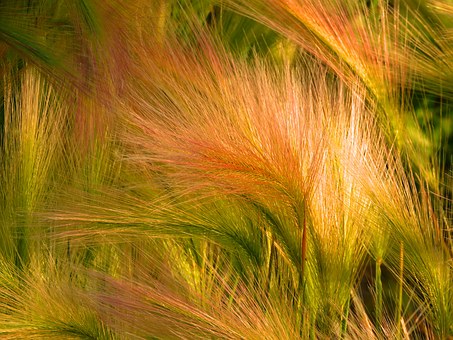Tips for Growing the Foxtail Barley

A grass that is sure to turn heads is the foxtail barley grass. This grass is a real show stopper with leaves that are arching and beautiful colors that will lighten up your garden and landscapes. I love this grass because it is real showy and has such charm.
The foxtail barley can be found growing in pastures, railroads, the edges of marshes, poorly drained fields, coastal beaches, and along roadways. This plant can reach heights of one to three feet at maturity.
Native to North America the foxtail barley can be grown as an annual or perennial. There are some things to consider however when growing these grasses which we will be taking a closer look at so if you are interested in growing this beauty then continue reading as we enter the exciting world of the foxtail barley that has gotten so much attention.
Planting Location
Keep the foxtail barley growing its best by installing it in an area that gets full sunlight.
Soil Type
The foxtail barley can grow in a range of soils from clay, loam, sandy, and even chalk. It is best to plant in soil that is well-drained, the soil ph can be anywhere from neutral-acidic.
Watering Methods
When watering ensure that the soil is moist, allow the soil to dry out a bit before giving your foxtail barley another drink.
Fertilizing Methods
It is not a must to fertilize this grass.
Garden insect pest of the foxtail barley plant
The foxtail barley has no serious insect pests issues.
Diseases of the foxtail barley plant
There is also no known disease that will affect your foxtail barley grass.
Ideas on where to install the foxtail barley grass
Here are just a few ideas on where to install the foxtail barley grass.
1. These grasses can be used in a garden plant bed as a backdrop.
2. Can be installed beside a fenced area.
3. Can be planted alongside a wall.
Pruning Procedures
Cutting back your foxtail barley in the spring will help it to produce a nice new flush of bloom. When pruning this grass cut back hard for best results.
Additional Information
1. The foxtail barley is known to take the salt sprays.
2. These ornamental grasses can self-sow.
3. The long barbed awns have been known to cause serious injury to grazing animals. The awns from these grass lodges in their eyes, noses, and mouths.
4. The foxtail barley is a hardy grass.
5. It has been reported that this plant is not toxic to humans or animals.
6. The foxtail barley has a shallow root system.
7. This grass is pollinated by the wind.
8. The foxtail barley is a short-lived perennial grass.
9. These grasses grow in clumps.
1o. The foxtail barely is an invasive grass.
11. The foxtail barley is a cool-season plant.
Controlling the foxtail barley grass
The foxtail barley grass is known as an invasive therefore certain control measures such as mechanical control, chemical control, proper cultural practice, and tillage are used to control the spread of these plants.
Mechanical Control
Mechanical control involves the use of tools or machinery to keep the growth of these plants under control.
Chemical Control
The use of herbicides has been used in the control of weeds, when using chemicals it is best to follow the instruction for best results. Some of these instructions include timing, mixture, when to apply, and how to apply.
Tillage
Tillage is believed to be the most effective way to control the foxtail barley grass in pastures and hayfields.
Proper cultural practices
Proper cultural practices involve the proper placement of plants and how to care for them. What we have discussed earlier in the above mentioned are ways to approach the foxtail barley from a cultural practice stand-point.
The final word
The foxtail barley is an amazing ornamental grass that can really give that added touch. These plants are easy to grow and care for, the only downside is the awns from these plants which can have a negative impact on grazing animals but for the homeowners, our concern would be to keep our dogs and cats out of an area where these grasses are installed. Dogs especially cats can become curious and venture into these areas that may be a painful experience for them. So if you think this is the grass for you then go ahead and plant some and enjoy their beauty.
About the author
Norman loves being in the garden, both at home and for his job....
he is 'Natures Little helper' being outdoors, growing his vegetables and flowers from an early age.
Now having spent over 22 years in the profession he want to give some of his knowledge to others...
his vast array of hints and tips you will find scattered over this site will help you no end growing plants in your garden.
